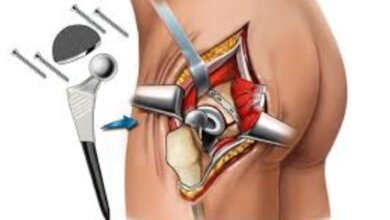Timing is everything in agriculture. Whether you’re planting a new crop or managing pest threats in mid-season, the decisions you make about when to act can have long-term effects. Among those decisions, soil-applied insecticides often get overlooked—or worse, used only when things go wrong. Yet, these insecticides are most potent when used at the right time, not as a last-minute fix.
While foliar sprays and seed treatments often take the spotlight, soil-applied insecticides quietly work where the problem usually starts—at the roots. They’re especially valuable in systemic protection, long-lasting coverage, and reducing early-stage pest buildup that can derail your entire season.
At the Time of Planting: Setting the Foundation for Pest-Free Growth
The planting season is the best time to use soil pesticides. Systemic protection can be easily integrated into your planting schedule at this time, when the seed and root system are most susceptible. Before germination even begins, the soil is frequently infested with pests such as early-season termites, white grubs, and rootworms. Delaying action until symptoms manifest allows them to feed, proliferate, and establish.
At planting, a soil insecticide forms a protective barrier around the seed and emerging roots. Systemic options begin to take effect almost immediately, offering defense against insects that attack underground or during early leaf development. I used this approach with EndTask Fipronil 40% + Imidacloprid 40% WG Systemic Insecticides in my maize field last year. The active ingredients persisted through critical root development stages and also provided above-ground suppression of sucking pests, such as aphids and thrips, once systemic movement took effect.
The most noticeable result was even germination and consistent early growth, particularly in pest-prone zones where gaps or yellowing were common in previous seasons.
- Consistent root health even during high soil pest load
- Reduction in early-stage foliar sprays by over 40%
Applying systemic protection at sowing helps eliminate pest threats before they even breach the root zone, allowing young plants to establish faster and stronger.
After Crop Rotation into High-Risk Fields
One common but underestimated risk arises when rotating crops into fields with a history of pest buildup. For example, legumes planted after sugarcane or cotton can face soil-borne pests carried over from the previous crop cycle. These might include cutworms, root borers, or subterranean larvae that survive in plant debris or moist soil layers.
In these situations, pesticides sprayed on the soil serve as a preventative measure. Applying a soil pesticide as part of your rotation protocol helps eliminate the threat before it manifests itself, as opposed to waiting for indicators like wilting or poor stand establishment. This is particularly crucial if the rotation includes crops like soybean, moong, or groundnut that have shallow or delicate roots.
Pre-plant insecticide treatment in pulse rotations dramatically improved root development metrics and decreased pest occurrence by more than 55%, according to a study by the Indian Institute of Pulses Research.
Never plant without soil protection in fields with a history of pest pressure, particularly when switching between crops with differing rooting profiles or canopy coverage. Persistent pests extend their lifecycle and adapt without help, becoming more powerful every season.
During Early Monsoon Onset: Moisture-Driven Pest Activation
Rainfall changes everything underground. As soon as the first consistent rains arrive, insect eggs begin hatching in the topsoil. Moisture activates dormant pupae and larvae, particularly for pests such as white grubs, mole crickets, and cutworms. These pests are often unnoticed until seedlings collapse or root masses turn spongy and discoloured.
In these areas, it is crucial to apply a soil insecticide before the onset of the monsoon, either immediately before or during the first significant rainfall. When the timing is correct, the insecticide reaches the pests as soon as they appear and before they cause any damage. After hatching, many of these insects stay in the top 5–10 cm of soil; therefore, systemic treatments with long residual activity and rainfastness are most effective.
Termite infestations brought on by the monsoon once destroyed several rows of sugarcane in my field before I could even identify the entry points. As a result of that experience, I now treat the soil before the second rain is predicted to occur. The outcome? Almost all of the damage that used to show up by week three has disappeared.
“The rain doesn’t bring the pest—it wakes them up.”
This is what a crop protection advisor once told me. That one insight reshaped how I prepare my soil before every rainy season.
When Early Symptoms Are Localized but Spreading Fast
Insecticides applied to the soil are not limited to pre-planting applications. Localised root feeder epidemics in crops like tomatoes, onions, and chillies can spread swiftly. The infestation may have spread throughout the row or beyond by the time above-ground symptoms, such as wilting or yellowing, appear. In these situations, more movement can still be stopped by applying a spot soil treatment, such as soaking or furrowing.
Systemic medicines that have both ingestion and contact action are best suited for mid-season treatments. They combat pests that are present in the soil as well as those that are spreading to nearby roots. Applying soil at this stage provides the plant with a window for recuperation, slows down the growth of pests, and interferes with their reproduction.
It’s critical to move fast. Even systemic intervention might not be sufficient after larvae or nymphs reach maturity and depth. Therefore, in addition to foliar observations, field scouting should involve root inspections. The better the outcomes of in-season soil treatment, the earlier the epidemic is identified.
Last season, I established a buffer zone for localised root borer activity in my brinjal plot by applying a soil drench to diseased patches. Within five to six days, it not only stopped lateral spread but also restored plant turgidity, which I couldn’t have done with foliar treatments alone.
FAQs
- When is the ideal time to apply soil insecticides?
At planting or before pest-prone periods such as monsoon onset. It’s best to act preventively, but they can also be used for spot treatments when infestations begin. - Do soil insecticides help with above-ground pests?
Yes, systemic insecticides are absorbed by roots and move upward, helping control sap-feeding insects like aphids and jassids in early stages. - Can I combine soil insecticides with fertilizers or irrigation?
Yes, many formulations are compatible with basal fertilizer applications or can be incorporated with drip irrigation or fertigation schedules. - How often should soil insecticides be used?
Use them once per crop cycle, depending on pressure. Avoid overuse to maintain soil health and avoid resistance buildup. - Do soil insecticides harm beneficial microbes or earthworms?
When used as per label recommendations, most systemic products have a minimal long-term impact. Overdosing or repeated use can disrupt the microbial balance, so rotation and moderation are crucial.
Preparing, Not Repairing
The goal of applying insecticides to the soil is not just to eradicate insects but also to prevent pests from gaining an advantage. Your crop is vulnerable at each of the four stages: planting, crop rotation, monsoon start, and early outbreak. Additionally, each one offers you an opportunity to prevent harm.
Everything that develops from the soil benefits when the soil is treated as the first line of defence. The system remains balanced for a more extended period of time from the root to the canopy. It implies a lot more yield you can rely on, fewer surprises, and fewer rescues.



